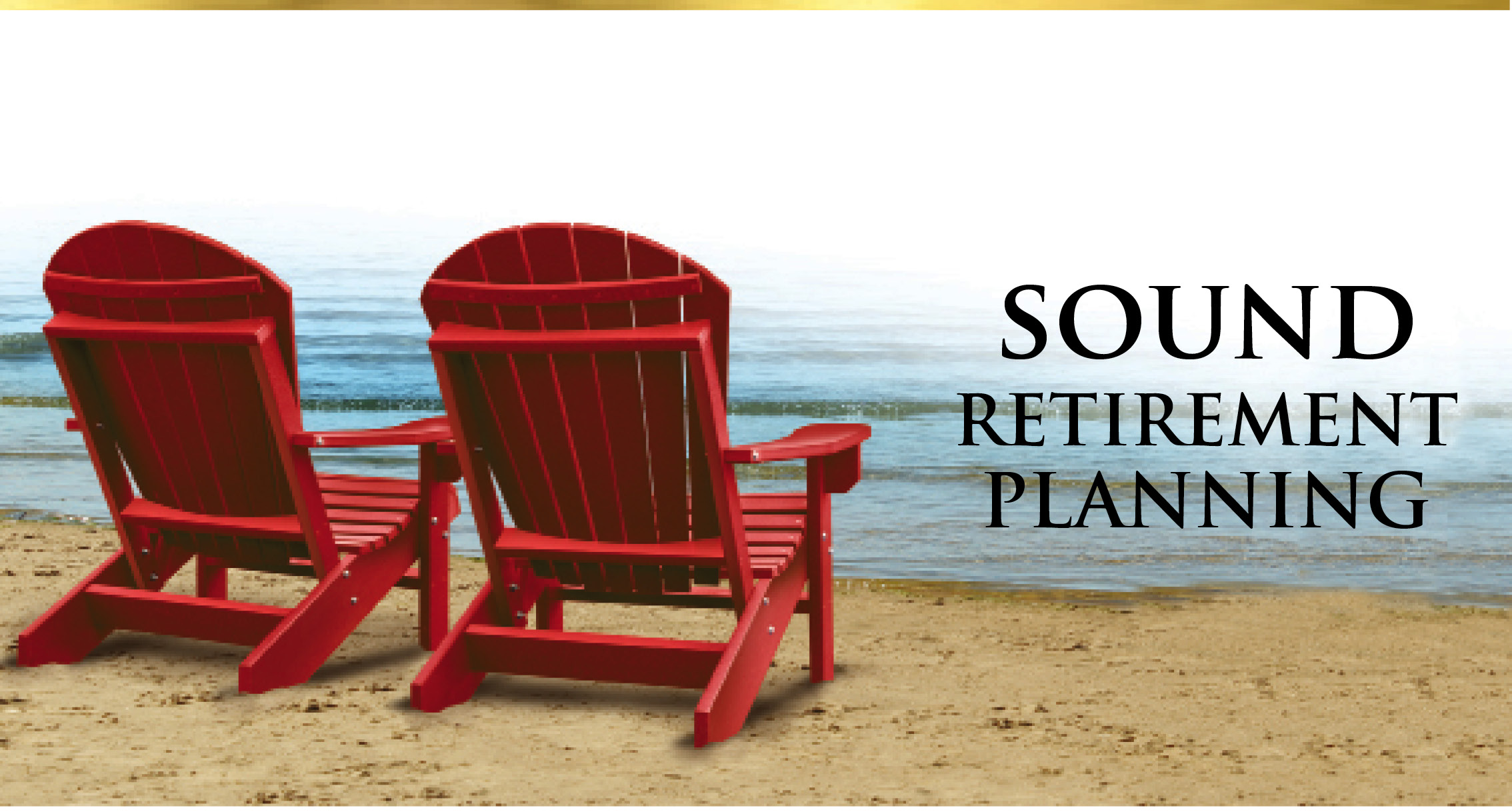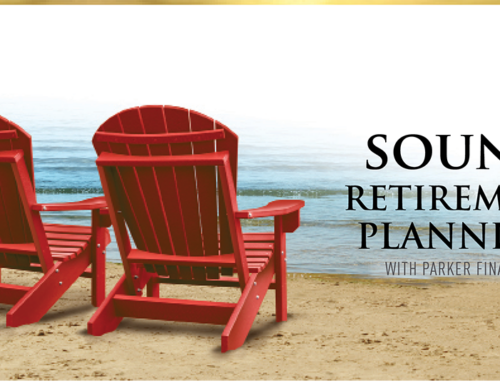Jason and Emilia discuss three things that a retirement plan needs.
Below is the full transcript:
••••••••••••••••••••••••••••••••••••••••••••••••••••••••••••••••••••••
Announcer: Welcome back America, to Sound Retirement Radio. Where we bring you concepts, ideas and strategies designed to help you achieve clarity, confidence, and freedom as you prepare for and transition through retirement.
Now here is your host, Jason Parker.
Jason: America welcome back to another round of Sound Retirement Radio. Sound Retirement Planning is the book and we’re trying to get both of those under one name so when you see the podcast nowadays you’ll notice that it’s Sound Retirement Planning.
Welcome back. Glad to you have you. I’m excited to be here. You’re listening to episode number 146. The title is, Income Safety and Growth. Before we get into that, there are a couple of ways that I like to start the morning.
The first one is by renewing our mind. A good friend of mine this morning told me, he said, “Jason, one of my favorite verses is Proverbs 15:22.” So I thought I’d share that one this morning. It is, “Plans fail for lack of counsel but with many advisors, they succeed.”
That’s great, a great reminder. We’ve got a joke, and it’s my good fortune to announce that we have Emilia Bernal back on the program with us. Emilia welcome back.
Emilia: Thank you. Welcome to everybody else that’s listening today. I’m going to do the joke for today.
Jason: Thank-You.
Emilia: Yes. Here’s what I have for you. Why didn’t the man report his stolen credit card?
Jason: I don’t know. Why?
Emilia: The thief was spending less than his wife.
Jason: I thought that was going to be some kind of Equifax joke or something.
Emilia: That’s been going around but no. I guess when … I don’t spend as much as my husband. I think it would be the other way around for me.
Jason: That’s right. This episode number 146, Income Safety and Growth. I guess a quick primer on this one. This really is what every retirement plan needs. This is what I think ultimately what people say they want. Of course, they need income. You have to have cash flow to have a retirement. They want some safety because they don’t want to be totally exposed to the plan not working. Then they want some growth. I’m excited to dig into this Emilia.
Emilia: Yeah. Jason why did you decide to talk about the three things that most retirement plans need?
Jason: It was really highlighted to me actually in the last interview that we did for Sound Retirement Radio where I interviewed author Don Ezra. Don has a unique background. He used to work as a consultant to pension funds. He would go out to these huge pension funds and he would educate them about things they needed to be doing for people they served.
Don actually used those three terms. He said, “Even at the pension funds, they want the same things because when people are retiring a pension means they’re going to be getting income.” The pension needs to be able to provide that income. The pension needs to have some level of safety there so they know they can meet their obligations for some period of time. Then of course they need some growth in that portfolio to be able to provide income for people that are still working but are going to be looking to retire at some point in the future.
I thought, isn’t that something? Everybody is really doing the same thing. In that interview if our listeners haven’t heard that one, they should go back and listen to episode 145 because Don talks about the plan that he’s put together for he and his wife because they’ve been retired now for about 7 years.
Income Safety and Growth, it’s what every retirement plan needs. The one little added bonus that I would say in addition to those three elements is they need a good budget. They need to understand how much money they spend. Let’s say you have 10,000 dollars a month coming in. You think, that’s really good. If you’re spending 15,000 dollars a month that’s really bad. It’s not just having income. It’s matching the income up to the expenses.
Emilia: Great. Okay. Let’s talk about the three things. We’ll start with income.
Jason: Income. Actually before we jump into that. I want to remind our listeners, Retirement Budget Calculator.
Emilia: Yes.
Jason: If they haven’t taken the time to really put on paper where all of their spending is going. It’s a lot different exercise. Somebody once said, “The weakest ink is mightier than the strongest memory.” I think there’s something to be said about going through the exercise of writing the stuff down and being able to measure it and track it from year to year. That is why we created the Retirement Budget Calculator.
Just remind our listeners that’s a paid tool. It’s not free to use. You got to retirementbudgetcalculator.com. If you use the coupon code either, radio or podcast, depending on how they listen they can get 50 percent off of the Retirement Budget Calculator. Really want to encourage people. As a Financial Advisor we really can’t give people good advice about whether or not they’ve saved enough, until we know how much money their spending.
Emilia: Yeah.
Jason: On this idea of income, we always want to start with secure income. A great exercise to ask is, how much of your retirement income do you want to be secure? I’ve recently been working with some folks and we are analyzing their situation. What we found was, if we only use the Social Security income that they had coming in, that was only going to produce about 50 percent of the income needs they needed. About 50 percent was going to be coming from Social Security. The rest was going to have to be coming from investments.
They didn’t have any pensions. Social Security and pension are really kind of the bedrock. The foundation for most people’s retirement cash flow plan. With Social Security we want to make sure that people are optimizing that benefit. Even if you were born after January 1, 1954, there’s still some unique opportunities to look at on how to maximize Social Security. The things people should be doing there. We just want to make sure that people are really maximizing the Social Security income they have to get the most out of that program.
I’ve found that optimizing Social Security can be the difference between sometimes 50 to as much as 100,000 dollars of additional income over a married couples lifetime. We do that kind of an analysis for people Emilia when we’re putting together the retirement cash flow plan for them.
Some people out there, our listeners may feel more comfortable doing this on their own without getting any advice or guidance. For those people I want to encourage you to … Especially for married couples, AARP has a retirement Social Security calculator that people can use. There’s no cost to use it. You don’t have to sign up for anything to use it. Just Google, AARP Social Security and the calculator will come up and it will give people, especially married couples a really good foundation on how to maximize their social security income.
That’s an important part of their retirement cash flow plan. Then of course, the question on the pension. Do you take a lump sum if your employers offering a lump sum distribution on the pension? Or do you take the guaranteed income? That’s a question that many people are trying to wrestle with.
What I’ve found that most instances, not all, but in many instances the pension that’s offered from the employer is greater than the guaranteed cash flow that we can go out and buy in the private marketplace from an annuity for example.
If you have an opportunity to take a pension it’s real and important decision on whether or not you take it as a pension or lump sum. It’s also equally as important as to whether or not you take a survivor option on there. I’ve seen these situations play out where people don’t take out a survivor option, one spouse dies and then the left spouse is left with only Social Security and maybe some assets. That can sometimes backfire on people so you really want to be careful with that decision on the pensions.
Emilia: It sounds like there’s a lot of different options and decisions to make. Jason what are some of the financial tools people use to create income?
Jason: Yeah. That’s a great question. Income again … Retirements all about cash flow. If you don’t have income you don’t have a retirement. If you really think about the reason you saved money and what retirement is to you … I get the opportunity to ask people this question all the time.
What’s the purpose of this money? In most instances they say, “It’s for our retirement.” I say, “What do you mean?” They say, “It’s to be able to maintain our standard of living and to cover any medical emergencies and never become a burden to anybody physically or financially.”
One of the things we were talking about, when we’re talking about income is, what percentage of your income plan do you want to feel secure and guaranteed? One of the financial tools you can use to create more security in the cash flow plan are annuities.
Annuities come in a lot of different flavors. You’ve got immediate fixed, variable fixed indexed. Ultimately, the reason for the annuities generally speaking are to produce either one to two things. Either more safety for somebody or some kind of guaranteed income.
As far as financial tools goes, annuities are the only tools that you can use the word guarantee with. If we’re using Mutual Funds, ETF’s, stocks, or dividend paying stocks, bonds, municipal bonds, corporate bonds or treasury bonds, none of those things we can use guarantee. Especially with bonds. If we sell them in a rising interest rate environment we could take a loss.
Ask the question, how much of your security … What really makes you feel good? What I found is that, if you can be at least 70 percent of your future income needs are guaranteed, for most people their willing to gamble or risk that 30 percent. Just really getting into the comfort zone of what’s appropriate for you.
One of the things I was looking at Emilia, before our interview today was, Vanguard has a study they put out. This is an older study. It was back in 2012 but it was about the four percent rule. They were talking about the scenarios of the probability of success of a retirement plan. They were showing examples there was an 85 percent success rate that the retirement plan would produce enough income for people to live the rest of their lives based on past performance of asset classes.
I read that and I think to myself, 85 percent probability. A lot of people would feel pretty good with an 85 to 90 percent probability. I don’t know about you, if you get on an airplane you’re gonna go visit your family at Christmas. What if you get on the airplane and they said, “Emilia there’s an 85 percent chance we’re gonna make it to your destination.”
Emilia: No. I wouldn’t feel very comfortable with that.
Jason: I’m not getting on that airplane.
Emilia: No.
Jason: It’s amazing to me when people talk about probabilities of success in a retirement plan. I want 100 percent probability. If I don’t have it, we need to look … Do I need to work longer? Do I need to have some part-time employment? Do I need to buy an annuity? What do I need to do to make sure that I’m not sitting on airplane thinking there’s only an 85 percent chance I’m getting to my destination.
Emilia: Yeah.
Jason: Annuities are one tool. Today we actually see a lot of people looking at dividend paying stocks to produce cash flow for a couple of reasons. Number one, the yield on a lot of dividend paying stocks today’s better than what they can get in a bond portfolio.
Number two, a lot of companies out there have increased their dividends over time so it’s a way to have inflation adjusted income. Dividend paying stocks have been a big one. There’s also things like preferred stocks and real estate investments trusts. We talked about government bonds. Of course Mutual funds and ETF’s that can give you broad diversification to those different tools have been very popular.
Dividends from utility stocks. Often times utilities work more like a fixed income vehicle than they do a stock because the dividends are generally higher but there’s not a lot of capital appreciation there.
Then of course, there’s the total return approach to spending. Which means that you pick a percentage you’re going to withdraw from your portfolio every year then you adjust that every year for inflation.
Those are really the different ways people are … The different tools that have been designed for people that are looking for income. That’s many of them. I would say there’s a lot of alternatives out there today. Some of them are very risky. Some of them are more secure.
I know some people that have done really well just investing in real estate in their local communities and living off of the income that’s produced off of that real estate. That would be another cash flow item.
Emilia: That’s great. It’s great to know there’s so many options out there. That goes with the topic of security and safety. Why is it important to have some safety in retirement?
Jason: Again, the biggest risk that you face, or one of the biggest risks you face is that right when you retire you are pulling money out of an account that is falling in value. People have probably heard me say this before but it’s like being stabbed and going to donate blood at the same time. You’ve got a bad situation and you’re making it worse.
It’s a sequence or return risk. Especially in the world that we live in today where the markets trading at all-time highs. Really, to many peoples disbelief the market continues on the way that it is. Of course, we had all of this quantitative easing. We had interest rates just push way down and a ton of money pumped into the system. People aren’t making any money in bonds. In fact, people that have these heavily weighted bond portfolios, probably aren’t seeing a whole lot of growth in their portfolio these days because interest rates are starting to ratchet up.
We’ve seen some people that have been coming in recently, saying, “I told my advisor I wanted things to be conservative but I look at my statements and I’m not making any money, yet the markets up 20 percent since November of last year, what’s going on?” Often times it’s because they have these heavily weighted portfolios in bonds. Bonds unfortunately, are not super attractive.
The reason we want to have some safety is because time is the cure to the volatility of the stock market. The more time we have, the more risk we can afford to take. Essentially what we’re trying to do is we’re trying to buy time. As long as you have … Depending on the research that you look at, some people will say three years of safety. Kind of at the far end of the conservative spectrum would be more like 5 years of safety if you can afford it. Not everybody’s investment portfolio can afford to have 5 years of safety. That’s where I like to err. I always like to err on the side of saying, “Let’s hope for the best but plan for the worst.”
Emilia: Absolutely.
Jason: Hope for the best and plan for the worst. You just want to have some safety so you’re not pulling money out of a portfolio that’s falling in value because you’re reverse dollar cost averaging. You’ve got a bad situation and you’re making it worse.
Emilia: Yeah. When I think of safety … Like you said Jason, I always want to think of my budget first. I want to remind our listeners that we have the Retirement Budget Calculator. It’s a cost for the calculator online. If you go online right now you … I’m reminding our listeners that you can put in the code, “podcast” or “radio” and get 50 percent off.
Jason: Absolutely.
Emilia: I think that’s just a great place to start with that safety that you’re talking about. At least for me it is.
Jason: I’m so glad you said that because there’s only a couple of levers we can pull on a retirement plan. We can reach for higher return, which is exposing us to more risk. We can have you work longer. Which, a lot of people that are wanting to retire aren’t liking that option. Or we can really dial in the spending. The budget is such an important piece. I really think it’s the bedrock. It’s the foundation of a good retirement plan is having a good budget. Understanding where your money is going then being able to match your assets up with your liabilities.
Emilia: That’s great. Jason what does safety mean and how can we achieve it?
Jason: That’s a great question. Safety means different things to different people. I have learned this over the years. Safety to me means, I’m not going to lose my principle based on market fluctuations. I’m not gonna lose … If interest rates go up, I’m not gonna lose. If the stock market tanks, I’m not gonna lose.
There’s only a handful of places you can really put money that’s truly considered safe. In my opinion safe, secure and guaranteed. You’ve got bank deposits. Things like certificates of deposit. If you want a higher rate of return. You have that kind of financial tool. Those are offered by banks. Insurance companies offer fixed, deferred annuity contracts. Those work and look a lot like bank cd but its issued by an insurance company. Those are only as good as the financial strength of the company offering the guarantee behind them. It’s considered a safe place. We don’t have to worry about interest rates going up. We don’t have to worry about the stock market falling apart.
Then of course you have US Savings Bonds. Sometimes people get this confused with Treasury Bonds. US Savings Bonds do not carry the same interest rate risk like a Treasury Bond does. Savings bond is a saving’s vehicle. In my opinion if safety a component of this plan, using those tools for an element of a plan is going to make sense so that we have some safety.
Emilia: That’s great. Jason, you’ve covered two of the three topics, income and safety. What about the growth?
Jason: Growth is everybody’s favorite area. It’s amazing to me. Part of the reason is we have to battle these two things that are … It’s almost like you’ve got a little angel on one shoulder and a little devil on the other one. I don’t know who’s saying what but one of them is saying, “Take more risk, get a higher return.” The other one is saying, “No, no, no, the world is coming apart at the seams, you’ve got to have everything buried in the backyard in a can because it’s all gonna fall apart, go buy gold.” That’s what the doomsayers’ are always telling everybody, “Buy more gold.”
It’s balancing those two, fear and greed. We need to have growth in most instances. Most people aren’t in a position where they can just stick everything in a bank cd earning one percent and live off of that. Most people are going to have to have that portfolio growing in some way.
They key is just to make sure the growth is happening with assets that we don’t need in the short term. Again, as you think about your retirement life span from the moment you retire, until the moment you pass on, you just want to make sure the money we don’t need for the longest period of time is the money that’s gonna be the most … The money where we take the most risk with the assets.
The key is diversification on growth and the key is time. In terms of how we diversify, you can use stocks, bonds, mutual funds, ETF’s, hedge funds, limited partnerships, real estate, real estate investment trusts. There’s a lot of financial tools out there to give you exposure to risk to growth. Some of it’s gonna be what you’re most comfortable with. The tools you’ve used over your life that you feel the most comfortable with. Sometimes you’re gonna go out and you’re gonna hire somebody to help you craft a plan. It’s just making sure that you’re not taking too much risk. You don’t have all of your eggs in one basket and that we set realistic expectations about that growth.
In today’s economic environment, if you think you’re going to get 15 percent on your money every year that’s just kind of pie in the sky pipe dream stuff.
Emilia: Yeah. You covered the topic of what financial tools people can use. Jason do you have any recommendations on how people diversify in the growth segment?
Jason: Yeah. There’s two ways that we teach people that I think are smart for diversifying. Diversifying in retirement is different than it is when you’re working because when you’re working you’ve got your labor and you’re adding money to these accounts and you don’t need them. Now that you’re retired you need the money.
The two ways for growth that I like to think about … The first one is what I call strategic asset allocation. Strategic asset allocation is using … It’s based on, I call it the science of investing based on modern portfolio theory and efficient market hypothesis. Essentially what it says is, we create a broadly diversified portfolio across asset classes and sectors. Diversified across the entire globe. Then we rebalance that portfolio as necessary to maintain the asset allocation.
When you rebalance a portfolio it’s really counter intuitive to what a lot of people want to do. When we rebalance what we’re doing is, we’re selling some positions that have done well and we’re buying some positions that have done poorly. That sounds kind of weird but if you believe there is eventually going to a regression to the mean, then what you’re doing is selling high and you’re buying low. You’ve taken the emotion out of it. You’re smoothing volatility over time. That’s strategic asset allocation.
With strategic asset allocation we want to use low cost index funds. Keep your fees as low as possible and rebalance as necessary to maintain that asset allocation. The second way is tactical money management. Tactical money management is what I call the art of investing.
Tactical money management, nobody has won the Nobel Prize in Economics. It says that there are times when we can move to cash to try to protect a portfolio. Tactical money management has some pros and some cons.
Number one, some of the reasons people like it is because they like the idea of having some control and some safety to say if something really bad happens in the economy we can move out of equities and into cash to try to protect the portfolio.
Some of the disadvantages of a tactical money management are, it’s more expensive from a fee standpoint. It’s not as tax efficient because there’s buying and selling going on. Over a long period of time, most tactical money managers don’t beat their respective index. That’s one of the reasons indexing has become so popular is because over a long period of time, most active money managers aren’t going to beat that index. I think the rule is only 20 percent of managers actually beat whatever index their tracking.
The reason I think it makes sense to use some tactical in portfolios for retirees is because most retirees when I’ve had the chance to meet with them, they never say, “Jason the reason I’m here today is because I’m trying to beat in index.” What most of them are saying is, “I want to earn a fair rate of return on my money. I want to outpace inflation by maybe a point or two. In the bad years when things really take a dive I don’t want to get wiped out.”
I don’t think it has to be all or nothing depending on your asset level and what the plan looks like. For some people, they can use just a sole strategic approach. Keep their fees as low as possible. That’s gonna work okay because they’ve saved plenty and they have enough in reserves.
For other people, they may need to add that tactical piece just to help buffer on the downside. Create that emergency brake. When you’re driving down in the car, if you’ve got an extra emergency handle you can pull on if the brakes go out. It makes you feel good.
Just using both of those strategies. Just to recap Emilia, every retirement plan needs income. If you don’t have income, you don’t have a retirement. Number two, you want to have some safety so that you’re not pulling money out a portfolio that’s falling in value. Number three, you’ve got to have some growth because if you don’t have growth, chances are, most people just haven’t saved enough to finance their entire life without the portfolio growing at some level so we need some growth.
The most important piece in my opinion is knowing your spending. That’s why we created the Retirement Budget calculator that we’re very proud of. With that Emilia, we are out of time.
Emilia: Alright. Thank-You.
Jason: Thanks. Until next week, this is Jason Parker signing out.
Announcer: Information and opinions expressed here are believed to be accurate and complete for general information only and should not be construed as specific tax, legal or financial advice for any individual and does not constitute a solicitation for any securities or insurance products. Please consult with your financial professional before taking action on anything discussed in this program. Parker Financial, it’s representatives or its affiliates have no liability for investment decisions or other actions taken or made by you based on the information provided in this program.
All insurance related discussions are subject to the claims paying ability of the company. Investing involves risk. Jason Parker is the President of Parker Financial an independent, fee based wealth management firm located at 9057 Washington Avenue Northwest, Silverdale, Washington.
For additional information call, 1-800-514-5046. Or visit us online at soundretirementplanning.com.






